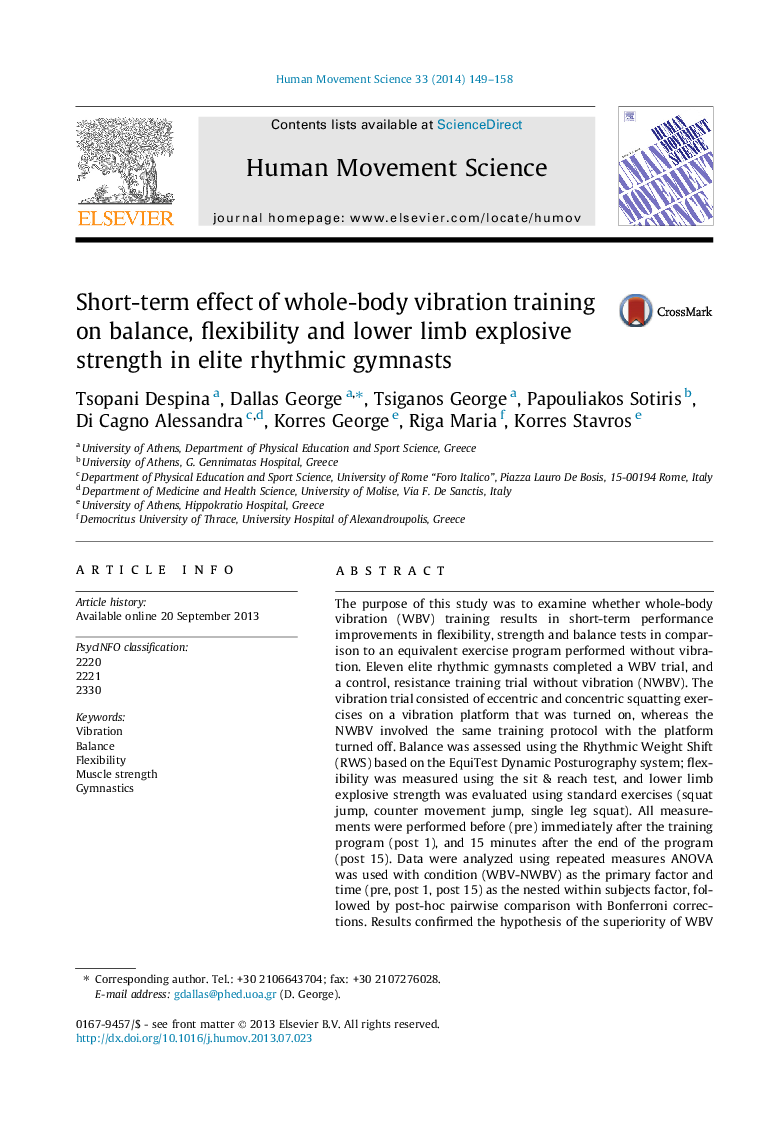| Article ID | Journal | Published Year | Pages | File Type |
|---|---|---|---|---|
| 7292525 | Human Movement Science | 2014 | 10 Pages |
Abstract
The purpose of this study was to examine whether whole-body vibration (WBV) training results in short-term performance improvements in flexibility, strength and balance tests in comparison to an equivalent exercise program performed without vibration. Eleven elite rhythmic gymnasts completed a WBV trial, and a control, resistance training trial without vibration (NWBV). The vibration trial consisted of eccentric and concentric squatting exercises on a vibration platform that was turned on, whereas the NWBV involved the same training protocol with the platform turned off. Balance was assessed using the Rhythmic Weight Shift (RWS) based on the EquiTest Dynamic Posturography system; flexibility was measured using the sit & reach test, and lower limb explosive strength was evaluated using standard exercises (squat jump, counter movement jump, single leg squat). All measurements were performed before (pre) immediately after the training program (post 1), and 15 minutes after the end of the program (post 15). Data were analyzed using repeated measures ANOVA was used with condition (WBV-NWBV) as the primary factor and time (pre, post 1, post 15) as the nested within subjects factor, followed by post-hoc pairwise comparison with Bonferroni corrections. Results confirmed the hypothesis of the superiority of WBV training, especially in the post 15 measurement, in all flexibility and strength measures, as well as in a number of balance tests.
Related Topics
Life Sciences
Neuroscience
Cognitive Neuroscience
Authors
Tsopani Despina, Dallas George, Tsiganos George, Papouliakos Sotiris, Di Cagno Alessandra, Korres George, Riga Maria, Korres Stavros,
